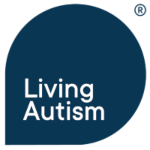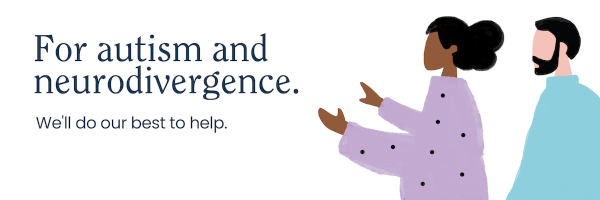AAC (Augmentative and Alternative Communication)
Any method of communication which supplements or replaces speech and usually involves selecting messages or codes from a set of possibilities.
ABA (Applied Behavioural Analysis)
An approach for helping children with autism learn through a very structured environment and rewards and redirection.
ABC (Autism Behaviour Checklist)
A checklist developed to help in the diagnosis of autism.
Adaptive behaviour
A behaviour which enables people to live independently, safely and appropriately in every day life. Examples are life skills such as personal hygiene, dressing, safe food preparation, rules at work, financial budgeting. Other examples include social skills, such as making friends.
Adaptive behaviour assessment
An evaluation which will help to indicate where the adaptive behaviours (see Adaptive Behaviour) are strong and where they might be weaker and could benefit from further learning and development.
Adaptive equipment
Specially designed equipment to support individuals with special needs to function at their highest level both in the home and in the community.
ADD (Attention deficit disorder)
A condition which is characterized by excessive difficulty in concentrating and extreme distractability.
ADHD (Attention deficit hyperactivity disorder)
A condition which is characterized by excessive difficulty in concentrating, extreme distractability and also overactivity including disruptive behaviour.
ADOS (Autism Diagnostic Observation Schedule)
A tool designed to help in the diagnosis of behaviours related to autism.
Advocate
A person who helps others to secure their rights, represents their interests and obtains the services they require.
AED (Anti-epileptic drug)
An anti-convulsant drug designed to prevent or reduce the severity of fits.
Aetiology
A term used in medicine to mean the causes or origin of a disorder, condition or disease.
Affective disorders
A mental disorder which is characterized by extreme changes in mood and which affects thoughts, emotions and behaviours.
Alternative communication
A term used for augmentative communication whereby individuals communicate in ways other than using speech.
Ambient lenses
Lenses used to improve the vision related to spatial organisation.
Angelman Syndrome
A rare condition which is characterized by severe learning difficulties, sleep disturbance and jerky movements.
Anoretic
A type of drug used to reduce appetite.
Anti-depressant
A group of medications used to treat individuals with depression, anxiety and other mental health problems.
Anticonvulsant
A medication for the control of seizures.
Art therapy
A therapy using art materials in a safe and facilitating environment to help personal development and growth.
Articulation
The process of pronouncing sounds for speech.
AS (Asperger Syndrome)
A disorder along the autism spectrum which is characterized by average or above average IQ, impairments in social communication and, sometimes, obsessive and limited interests.
ASD (Autistic Spectrum Disorders/Conditions)
A range of disorders or conditions, all of which are characterized by difficulties in communication, social interaction and imagination. It includes autism with a related learning disability and also Asperger Syndrome (see Asperger Syndrome).
Aspirations programme
A training programme designed to help develop the social skills of young adults with autism through opportunities to discuss their own social and vocational experiences.
Assessment
An evaluation of strengths, weaknesses and needs.
Assistive technology
Any device or system which would enable someone to perform a task they would otherwise be unable to perform. Examples would be devices for the hearing or visually impaired or devices to aid memory and communication.
Auditory integration training
An intervention whereby a person with autism listens to music which has been modified.
Auditory memory
The ability to receive, interpret and store spoken or heard information.
Auditory processing
The way the brain interprets sounds.
Auditory Processing Disorder
A condition which is characterized by interference in the recognition or interpretation of spoken or heard information.
Auditory training
A therapy to exercise the hearing system, including the ear drum and cochlear membrane.
Augmentative communication
The use of alternatives to speech to communicate with one another.
Autism
A lifelong developmental disorder which affects communication, social interaction and imagination and which is also characterized by extremes in sensory experiences.

